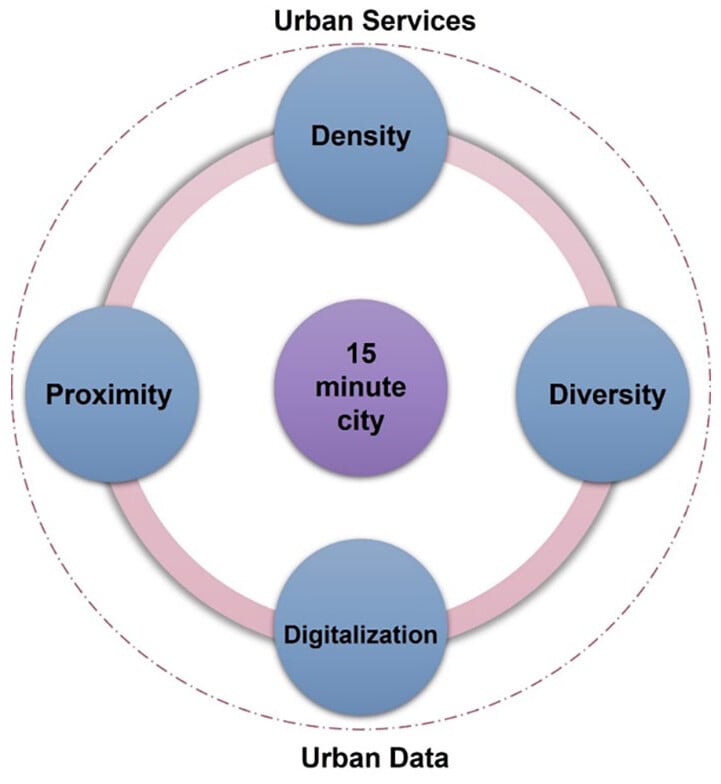Do You Know Why Smart “15-Minute Cities” Are a New Trend
15-Minute Cities are becoming a hot trend in urban planning around the globe. Designed so people can access all essential services within a 15-minute walk or bike ride, these smart communities promise a greener, less stressful, more sustainable life. Discover why governments and tech companies are investing heavily in this new urban model and why it could soon become the way we all live.
TECH & SCIENCE
Do You Know Team
8/18/20254 min read


In today’s fast-paced world, people are tired of wasting hours stuck in traffic, traveling long distances just to reach work, school, hospitals, or even a basic grocery store. This urban chaos has given birth to a revolutionary city planning concept known as the “15-Minute City.” A 15-minute city is a neighborhood where everything you need — workplaces, schools, healthcare, entertainment, parks, shopping, gyms — is available within a 15-minute walk or cycle from your home. It sounds like a dream, but this dream is quickly turning into a global movement. From Paris and London to Mumbai and Dubai, urban planners are redesigning cities to make life easier, healthier, and more sustainable. Let’s explore why everyone is talking about 15-minute cities and how this concept is changing the future of urban living.
1. What Exactly Is a 15-Minute City?
A 15-minute city is a smart urban design where all essential services are located close to where people live. It reduces the need for cars because residents can walk or bike everywhere. Imagine finishing work, grocery shopping, gym, and doctor visits all within your neighborhood — that is the core goal.
2. Less Traffic, Less Pollution
One of the biggest reasons cities are moving to this model is to reduce traffic congestion and air pollution. If you don't need to drive long distances, fewer cars will be on the road. That leads to cleaner air and less carbon emissions — a major environmental benefit.
3. Healthier Lifestyle for Residents
Living in a 15-minute city means more walking and cycling. People become more active without even trying. This kind of lifestyle reduces obesity, diabetes, heart disease, and stress. Streets become safer and greener, encouraging outdoor activity.
4. Time-Saving Convenience
In big cities, people can easily waste 2–3 hours every day traveling to work or running errands. With 15-minute cities, travel time is drastically reduced. People have more time for family, hobbies, and personal growth — leading to a better work-life balance.
5. Boosts Local Economy and Small Businesses
When everything is local, people shop in local stores and use local services instead of big chains outside the city. This supports neighborhood businesses and creates stronger local economies.
6. Community Building and Better Social Life
People who live and work in the same area are more likely to meet neighbors, talk to local shop owners, and build stronger relationships. This sense of community increases trust, happiness, and social well-being.
7. Smarter Urban Tech Integration
15-minute cities often use smart technologies like AI-based traffic controls, e-bikes, smart public transport, solar-powered buildings, and IoT sensors. These features make the city more efficient and futuristic.
8. Eco-Friendly Architecture and Green Spaces
Developers are creating eco-friendly buildings with renewable energy, rooftop gardens, and rainwater harvesting. 15-minute cities include many parks, tree-lined walking paths, and urban farms. This makes daily life feel closer to nature and improves mental health.
9. Reduced Dependence on Cars
In a traditional city, owning a car is almost a necessity. But 15-minute cities minimize the need for private vehicles. People can rely on walking, cycling, or shared electric mobility services like e-scooters and e-bikes for short trips.
10. Support from Governments and Urban Planners
Governments worldwide are including the 15-minute city model in their development policies to meet climate goals and sustainable development targets. Big cities like Paris, Barcelona, Melbourne, Singapore, and Portland have already started working on this concept at scale.
11. Better Emergency Response and Healthcare Access
With hospitals and clinics located within 15 minutes, emergency medical services become faster and more efficient. This model also includes local health centers and telemedicine hubs to solve health issues quickly.
12. Rise of Co-Working Spaces and Remote Work
As remote working becomes more common, neighborhoods have shared co-working spaces. These allow people to work near home without commuting to central business districts. This supports the 15-minute city model even more.
13. Increased Property Value in These Zones
Real estate prices increase in areas designed as 15-minute cities because people prefer to live in such neighborhoods. This creates a demand for smarter, greener neighborhoods.
14. Safety and Inclusive Urban Design
These cities are designed to be safer — with wider walkways, better lighting, traffic-calming measures, and more public presence. Well-planned zones ensure inclusivity for senior citizens, children, and disabled people too.
15. A Global Trend That Will Shape the Future
From Europe to Asia, urban planners believe this will be the standard for future development. Even Indian cities like Bengaluru and Delhi are planning satellite townships based on this model. Analysts say the concept will only get stronger over the next decade.
FAQs
Q1. Is a 15-minute city the same as a smart city?
A smart city uses technology for efficiency, but a 15-minute city focuses on accessibility and livability. Many modern urban plans combine both.
Q2. Will I need a car if I live in a 15-minute city?
You may not need a car for daily tasks, but you might still use it for long-distance travel.
Q3. Are 15-minute cities only for rich countries?
No. Affordable models are being tested in developing countries too, especially in India, Africa, and Latin America.
Q4. Is this model practical for large crowded cities?
Big cities can be divided into multiple 15-minute zones so each neighborhood functions like a self-sufficient mini-city.
Q5. Are there any disadvantages or criticisms?
Some critics fear government surveillance or forced restriction of movement, but supporters say it’s about choice and convenience — not control.
Conclusion
The concept of 15-minute cities is more than just a trend — it’s a new way of living that prioritizes human happiness, health, and sustainability. By bringing daily life conveniently close to home, these smart neighborhoods reduce pollution, save time, promote social bonding, and create a better urban experience. As the world focuses more on environmental goals and better quality of life, 15-minute cities are quickly becoming the blueprint for future urban development. In the next few years, you may find that your own city is being redesigned into one of these smart zones — and life might become much simpler and more enjoyable than before.
#15MinuteCity #SmartCityTrend #UrbanPlanning #FutureOfCities #SustainableLiving #GreenUrbanLife #SmartUrbanDesign #EcoFriendlyCities #NewCityConcept #UrbanRevolution
Knowledge
Empowering minds with reliable educational content daily.
Newsletter Signup
© 2025 DoYouKnow. All rights reserved.
Stay Ahead of the Trends – Join Our Newsletter
